REPEAT AFTER ME: early, middle, late. That’s the secret.
Trees & shrubs Ideas, Tips & Guides
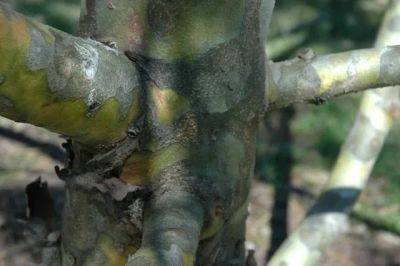
Not blooming, but (was) beautiful
Under normal circumstances, the bark on P. bungeana’s muscular trunk begins to peel off as the plant matures, and leaves behind a camouflage pattern of greens and yellows and tans. By pruning out some of its evergreen branches and opening up the structure of the plant, you can get a great view of the show from every angle, every day.Mine was really shaping up, getting to be a proper tree. And then HE showed up, the same male sapsucker who spent much of the winter in one of my older magnolias, the same guy who drums on the siding outside my bedroom to stake a claim to the territory in spring, to act really macho. In just a few days of visiting the pine, he’d opened up holes in a large section of the formerly

Growing native fruit trees: pawpaws and persimmons, with lee reich
Lee’s tips for growing pawpaw or American persimmon couldn’t make it sound more appealing, or simple:“Plant it, water it, and keep weeds and deer away for a couple of years, and then do nothing,” he says. No fancy pruning (like those apples crave), no particular pests–and a big, juicy harvest. More details on how to choose which variety to grow are included in the highlights from the April 29, 2013 edition of my public-radio show and podcast, transcribed below. To hear the entire interview, use the streaming player below. You can subscribe to all future editions on iTunes or Stitcher (and browse my archive of podcasts here).growing ame
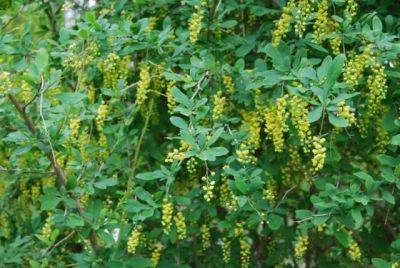
More, more, more (2)
AND THE BEAT GOES ON. If April was hectic, May is insane.

Best ‘pine’ cones, ever
The Korean fir in the photo was my Charlie Brown-style Christmas tree perhaps a half-dozen years ago, a scrawny potted baby I festooned with a few shiny things and positioned in the cool back mudroom. (By late summer, its cones turn tan-colored, so it didn’t decorate itself the way it had in summer. And you can only loosely call them pine cones: A. koreana is in the Pinaceae or Pine Family, but not a true pine.) After the holiday I heeled it in for the rest of winter, moving it to a permanent spot in spring.This beautiful smallish tree, to perhaps 15 or 20 feet tall (30 tops, I’ve read), has just one drawback: It can’t take the heat. For my location, that’s just fine; its ideal setting is zone 5 or 6, just like here. Various references say it is hard from Zone 5 to 7, or some claim as cold as 4 and warm as 8.
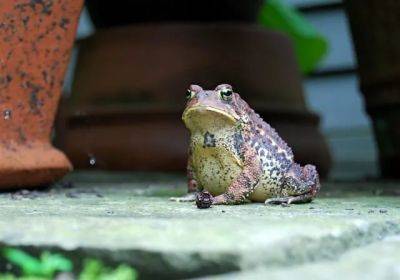
August-tour aftermath: any more incoming feet?
SOMEONE FELL ASLEEP IN A CHAIR LAST NIGHT AT 8, but this toad (loyal old tight-lipped friend that he is) is not saying who. In fact, he’s not saying much today other than good morning, before hopping away to hide behind the big pots in case carloads of people arrive at the gate for any more garden tours.

The hedge as masterpiece, by master piet oudolf
MY GARDENING LIFE STARTED with a hedge—cutting one back hard, specifically. It was the threadbare, tall old privet surrounding my childhood home, and I was determined to “rejuvenate” it, after reading about the process in a book. No artful hedge has ever been created by my hands, though—a fact that feels all the more lamentable after watching Sean Conway’s video tour (above) of designer and nurseryman Piet Oudolf’s garden in the Netherlands. What magic.
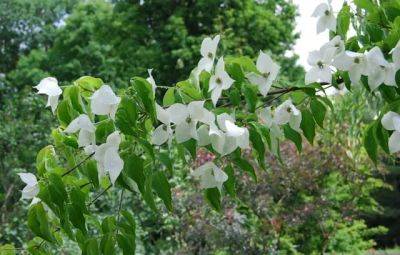
A mixed year here for kousa dogwoods
My favorite Kousa, the variegated shrublike one called ‘Wolf Eyes,’ looks anything but happy right now, perhaps a combination of an extra-dry May with repeat late frosts tossed in for good measure. That’s it below, in the distance.Mea culpa for not watering it properly, I guess; it looked good early on and then, poof, toast. No brittle twigs, thankfully; just lots of crisp leaf edges. I’m watching for signs of what it wants to do next before I do anything but keep it well-hydrated (no food, no pruning, not yet).And then there’s the smallest: a weeping Kousa, the one called ‘Lustgarten Weeping’ that I almost tossed, as those of you who were here last year will recall. Despite the fact that my un-beloved yellow bellied sapsucker male apparently moved from the nearby lacebark pine that was his passion last year to the weeping Kousa sometime in the last few months,
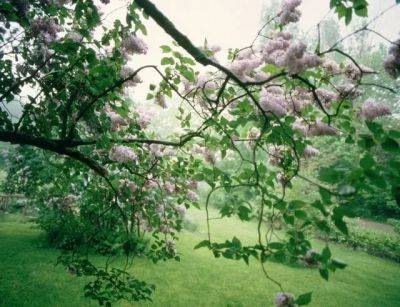
Pruning lilacs
Like other spring-blooming woody plants, the lilac produces its flower buds from late summer through fall for the following year’s display. Prune after, say, July 4th in the North and you risk reducing next year’s bloom. Prune in fall or early spring, and you guarantee that disappointment.A lilac is happiest if you cut bouquets from it each spring—essentially you are just deadheading it. Though not essential to its health or survival, the lilac isn’t really asking much but paying you heftily, since the trusses make extravagant indoor arrangements. You work a little, you win.A tip: before bringing the cuts inside, hammer the bottom few inches of the stem ends to split them, so they can drink up the water in a vase, or the flowers will wilt almost at once.Bonus: By
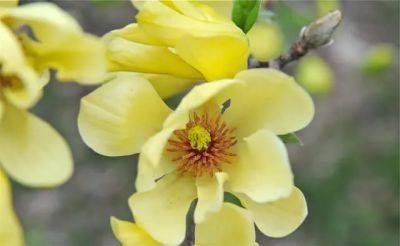
Designing with magnolias, with andrew bunting
Andrew, who is now assistant director of the Chicago Botanic Garden, is past president of Magnolia Society International’s board of directors, and remains a member of the society’s board. In his tenure over 20 years as curator at Scott Arboretum of Swarthmore College in Pennsylvania, Andrew built the magnolia collection from about 50 to more than 200 cultivars. That’s a lot of magnolias.Now Andrew Bunting is author of a book on the queen of flowering trees, called “The Plant Lover’s Guide to Magnolias,” just out from Timber Press as part of an ongoing series on various distinctive genera of plants.We talked magnolias on my public-radio show and podcast. Read along while you listen in to the April 25, 2016 edition of the podcast using the player below (or at this link)–and even learn how to train a magnolia or any w
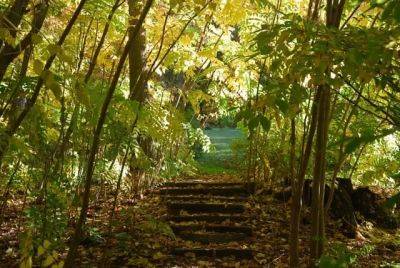
A devilishly good aralia
I couldn’t find Aralia spinosa for sale 15 years or so ago when I first wanted it, but a nearby nursery knew of a stash and got me some. They sent then-staffer David Burdick, now a popular daffodil and bromeliad expert with a business of his own, with the first few prickly beasts in ball and burlap.And those begat a colony, over time, a tropical-looking grove that’s handsome in leaf and in its high-summer flower period, and positively unparallelled in its autumn show of foliage and fruit. Its canopy becomes a stained-glass window of

Remember, nothing lasts
NOTHING LASTS. Need I say more to a bunch of gardeners? Not winter, nor spring, nor any other season; not Narcissus nor magnolias.

A kousa dogwood i’m certain about
Standard Kousas can get to be quite big things, 20 or 30 feet high and as wide or wider, making quite an impression when they’re in bloom. ‘Wolf Eyes’ is a comparative baby among the Cornus kousa clan, but a beautiful baby at that. Some references say it will get to just 6 feet high and 10 wide; I have no idea, but lust for mine to look like the one documented by University of Kentucky College of Agriculture.Even at barely 5 feet high and maybe 6 or 7 wide, my ‘Wolf Eyes’ simply lures me out to pay it a visit on a regular basis. I cannot resist. If that axis-creating eye-catchery isn’t enough, it also has long-lasting white flowers in late spring, big red fruits, and good fall color.This one, I’m not letting go of—at least not willingly. No matter what you say.
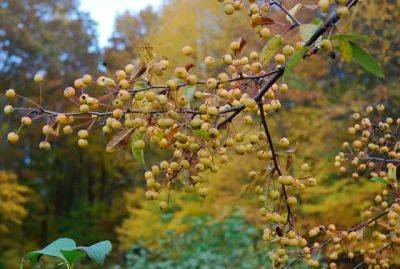
For lasting gold, malus ‘bob white’
‘Bob White’ didn’t make the Brooklyn Botanic Garden top 10 in their 2005 article rating crabs…but it was #11, the alternate behind ‘Hozam’ (or ‘Holiday Gold’) among the yellow-fruited forms. The article is worth a look if you’re thinking of adding a crabapple to your landscape, because choosing can be a challenge, and they have the great ones profiled.I grow my yellow-fruited crabs just beyond a stand of yellow-twig dogwood, Cornus sericea ‘Silver and Gold,’ so that my distant view of the whole gleaming area right now is quite nice: linear gold beneath a haze of golden baubles. The photo shows a small section of the combination.The birds will be back, I’m sure, for ‘Bob White,’ but offcolor fruits (read: other than red) seem to hold little interest until they are really hungry. I’ve talked about this before with hollies, and the same hold true with crabs. At least they have some consideration for my winter cheer, I suppose. By the way, I replaced the ‘Bob White’ thebark borers
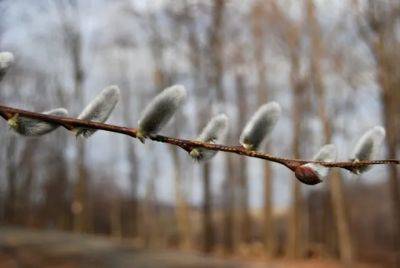
Giant pussy willow: salix chaenomeloides
Salix chaenomeloides is just one of various rough-and-tumble shrubs I planted the last year or two out alongside the road, between the parallel rows of my two-part front deer fence. I wanted another layer of botanical interest, and a little more buffer from the dusty dirt road I live on. Fast-growing toughies like the giant pussy willow, too coarse for most beds but a great companion in earliest spring in just such a spot, were perfect for the job.The shrub (Zones 5 or 6-8) is 10 feet high in just two years, and promises to be 12-15 and equally as wide in time. Its leaves are nothing spectacular, just willow-like. I’m told there will be yellow-orange anthers as the catkins mature, but even
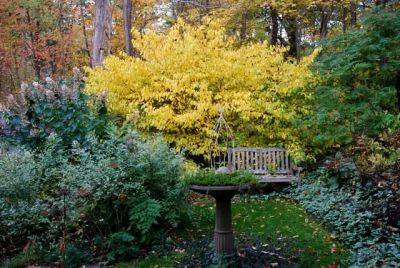
Forsythia alternatives pt. 2: spicebush
IN CASE I FAILED TO CONVINCE YOU in earliest spring that you didn’t want a Forsythia, but a Lindera benzoin or spicebush instead, more evidence just presented itself. Now try to resist this native Eastern shrub, and tell me that your Forsythia measures up to its gold standard.

Giveaway: q&a with broken arrow’s adam wheeler
I doubt that Broken Arrow, founded by Dick and Sally Jaynes in 1984 in Hamden, Connecticut, needs much introduction—especially lately, as they were just featured in a “New York Times” piece by my former colleague Anne Raver. As Anne mentioned in that article, Adam (now 33 years old) used to buy plants at Broken Arrow as a teen-ager; now he’s their Propagation and Plant Development Manager.In the latter role, he’s the kind of particular guy who goes looking for a winterberry holly that shows off even without its fruit on (gold-splashed foliage, anyone?); who has such a passion for witch hazels that the nursery now offers 45 cultivars; who tracked down a pink-flowered Stewartia and….but let him tell you:The Q&A With Adam WheelerQ. So what does it take to catch the eye of the guy whose job is to go around looking for new things to add into Broken Arrow’s already very sophisticated product mix? You must see a l
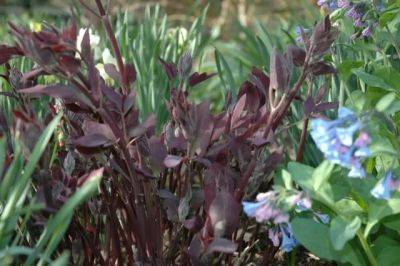
And the hits… (part 2)
IT’S ALL HITS, ALL THE TIME here at the garden, or at least it is this time of year. Meet more of my beloved companions (click to get to know each one)…and hurry, the next gang will be showing up and showing off at any minute now.
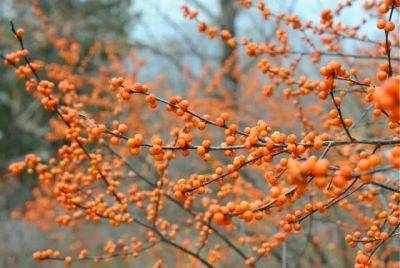
Tough year for winterberry, but what about birds?
In nature, Ilex verticillata or winterberry hollies inhabit the edge of the woods or even wetlands—not typically choosing to make their home where they’d suffer extra-dry conditions like the ones this year.Even with the occasional off year, I would not be without winterberries (or at least not intentionally). I hope the birds can make do with a quarter-crop, feasting instead on a bumper lot of crabapples and many seed-bearing things, from grasses to conifers. Fingers crossed.Learn more:Pretty, pretty: A gallery of winterberry hollies What birds like: 11 steps to making a bird garden Listen ins

Feeling grateful for great fruiting plants
Yup. All the paving here is littered with “slightly used” aralia fruit. It’s raining purple drops; the stains won’t be gone until a good rain washes it all down. Hilarious. A recap of some of my favorite plants, as promised:AraliasThese prolific late-fruiting woody and herbaceous plants, some native and others not, are an annual magnet for thrushes (including robins) and their relatives, as well as waxwings here. I grow the perennials Aralia cordata and Aralia racemosa, and Aralia spinosa (the latter a large shrub/small tree).CrabapplesI couldn’t make a garden, or a bird garden, without these prolific beauties, as you have heard me say repeatedly. From the small gold fruit of ‘Bo
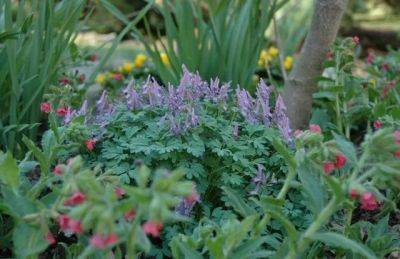
Blooming this week (2)
WITH A WEEK OF DAYS NEAR 80, the garden has moved ahead fast (perhaps too fast). No rain in sight, but blossoms everywhere, including these shot today.
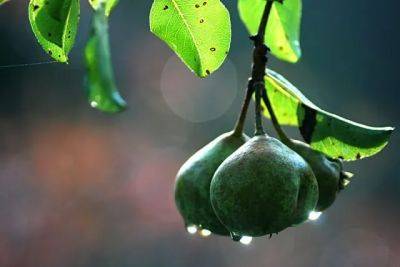
Food fest 10: can i eat these mystery pears?
I don’t even know if this lone pear, with its handsome lichen-covered trunk (background, below), is “wild,” or was planted by a previous owner, as were the remaining half-dozen or so big old apples that have already seen most of a century on this land, a remnant of a long-ago fruit orchard.Each year I’ve just enjoyed the pear for the character-filled tree that it is, and written off the fruit as useless, and a nuisance at that, since much of it drops to the ground and creates an experience not unlike mowing over golfballs (if you don’t slip and fall first after stepping on one). Birds and other wil

I’ve got sunshine (on a cloudy day)
I ‘VE GOT SUNSHINE, though it’s cold outside, and hardly like the month of May. The golden-leaved plants that are a backbone of the garden are seeing me through.
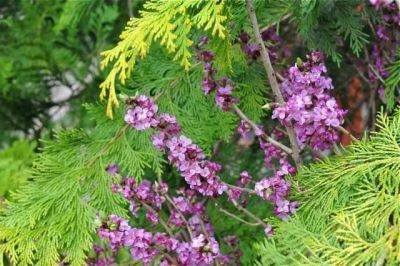
Great shrub: fragrant daphne mezereum
The flowers (from purple to white) are followed by poisonous red fruits, and this year I may try to germinate the seeds inside them, unless I can score some plants from Whitman Farms, perhaps, the only source I have tracked down (and where I have not ordered before, so no personal history to recommend it from). I only want the purple ones; fingers crossed. I never expected the Daphne to live so long, I guess, judging from where I sandwiched it between a shed and a gold-leaf Chamaecyparis obtusa ‘Crippsii.’ My previous plants gave up the ghost one after another, as Daphnes do, but this one just soldiers on, the sentry to another spring of heady scents.(1885 print from the University of Hamburg library collection.)Categoriesdeciduous
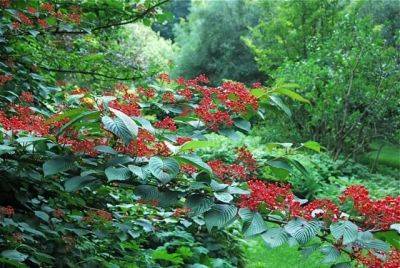
A fruitful year for my viburnum
There is an archive of viburnum tips and profiles of other fruit-bearing shrubs I love, great possibilities if you’re planning on doing some fall planting and want to bring in the birds, or have viburnum in need of TLC and need a hand. It’s all in the bullets below the slideshow for reference.Click on the first thumbnail to start the show, then toggle from slide to slide using the arrows beside each caption. Enjoy.Other Juicy Viburnum Treats from the Archives:THINK FALL (YES, FALL): My original homage to this genius of a genus. PRUNING VIBURNUM: They don’t like being picked at any more than you do. Prune these beautiful woody plants correctly and they will reward you and wildlife. TROUBLE IN PARADISE: Viburnum leaf beetle will ravage certain species and varieties in a flash, others not so. Learn how to combat this pest with non-toxic October-through-April search-and-destroy missions. More Fruit to Savor (and Share With Birds):WINTER
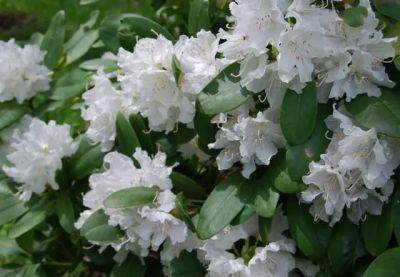
The white stuff
PEOPLE WHO KNOW ME know I say over and again that I am not a lover of white flowers. (Like all of us, I say a lot of stupid things.) But then I look around and, surprise, I have a whole lot of them.

My ‘secret’ to overwintering japanese maples
Once they have dropped their leaves and gone dormant, after a good hard freeze or so, I get out the hand cart and engage a brave friend. We say our prayers, then wheel them one by one over my hilly garden, down to the unheated barn.I will certainly meet my end someday under one of these big pots, when I am manning the downhill side of this hauling operation.I make sure that they are well-watered during the fall, so that they go into storage well-hydrated—and therefore less prone to dessication while in there. No water is offered in the coldest months, when the soil and the trees inside the building are mostly frozen, but I start checking around February, once the

Great shrub: spike winterhazel, corylopsis spicata
never really minded, because what followed the sometimes-half-strength bloom were pleated, bluish-green leaves (details in in the slideshow, below) so beautiful I never tired of them. And the plant’s structure, a slightly chaotic, outstretched tangle of delightfully crooked arms, pleased me all winter long. (That’s mine on the far left in the photo above, to show scale and shape, looking down the front path.)But then came the spring of 2010, the jubilee. As the bloggers in Southwest England at the Hegarty Webber Partnership garden design site will tell you, too, there was something going on that year with winterhazel. (I was happy for such company in that fine moment, and to “meet” them.) Their 20-something-year-old plant went positively mad, too. Synchronicity!Grow winterhazels in sun or part shade, in moist but well-drained soil, and if you’re pushing it (as I am) with the
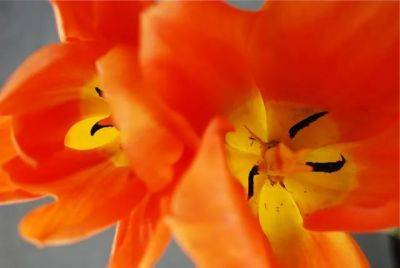
Too darn hot: hello, spring; goodbye, spring
H ELLO SPRING, AND GOODBYE SPRING, all in one sizzling weekend as fiery-hot as this overblown tulip. Freezing a week ago, now the garden and I are suffering from burnout. I feel a weather rant coming on: complaints to register, anybody? Or shall we look on the bright side: Yes, the magnolias will come and go in a total of 72 hours, but there’s asparagus for dinner.I plant tulips for cutting only, not in my beds, and plan for bouquets to span the several weeks of tulip season by selecting an early, a middle and a late variety.

Viburnums: think fall (yes, fall)
To create a year-round garden, I recommend starting your shrub shopping in the “V” aisle, for Viburnum. It was the stately doublefile viburnum (Viburnum plicatum tomentosum), that got me started in this outstanding genus of flowering and fruiting shrubs, so many of which are good in bloom, in fruit, and colored up in fiery fall foliage. The doublefile (bottom photo) is a plant whose habit of growth is so distinctive I could not help but notice. It stands with its branches held straight outward, like so many arms outstretched, and in spring they are completely covered with white flowers.The variety ‘Watanabe’ blooms off and on all season, May through summer’s end—how many other shrubs promise that? It is a compact version of the doublefile, reaching only 6 feet or so, an outstanding choice for smaller yards. If you can take the larger scale, the varieties ‘Mariesii’ and ‘Shasta’ (the most horizontal) are recommended. The doublefiles have another feature: handsome fall color, from a burnished wine color to smoky purple—another reason to include one in the landscape.Today I either possess or covet many Viburnum cousins, like the highly fragrant
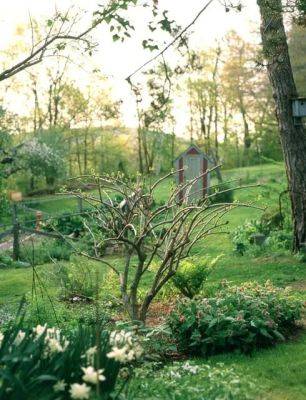
Pruning, pared way down
Take out the three D’s anytime they occur. The D’s are dead, damaged and diseased wood—and why wouldn’t you want to do this? (Some people say there are five D’s: dying and deformed being added to the list, but I’m trying not to get us overwhelmed.)Take out all suckers and “water sprouts” as often as required. This means that mess at the base of a grafted shrub or tree that looks like a thicket of shoots surrounding the trunk. It also means those things that shoot straight up vertically off a branch at a 90-degree angle or thereabouts from the branch, very common on fruit trees, say, or old magnolias. Look at the architecture of these shoots: If you left them on, what would they turn into? (They’d turn into the disaster in the photo below.) Nothing very u

The weeping kousa’s new home
Because of the sharp slope the kousa and I are on, I started with a single retaining wall around it, as you’ve seen before.Then I was frozen for a month or two; paralyzed by possibilities, and unable to sort what else would happen in the space beyond the kousa, which stretches to the west of the house.It’s good not to move too fast sometimes in the garden, especially when a long visual memory is still stuck too far forward in your brain. I hadn’t really let go mentally of the big old pine that dominated this whole area, a tree I loved.Finally, it came to me: Since I’d already made a commitment to “terracing” or changing the grade with that first retaining wall below the kousa, why not create another flat spot on the level below that (flat spots being in short supply around here) for a table and some chairs? And so the second terrace was born, looking very much like a gravel-filled old foundation, perpendicular to the house.You can see how severe the gra

A closer look at tree bark, with michael wojtech
Michael Wojtech of Know Your Trees dot com and author of “Bark: A Field Guide to Trees of the Northeast” (Amazon affiliate link) can answer those questions, plus this one: Can you actually learn to identify trees by their bark (an especially useful skill now through spring, when many are leafless)? Hint: The answer is yes.Michael left a 15-year business career to pursue his love of natural history and writing, and earned his Master’s in Conservation Biology from Antioch University New England. His thesis, on tree bark, became the basis for the field guide. Though the book’s plant ID section covers trees of the Northeast, much of the ma
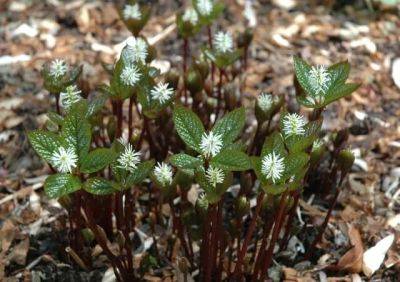
The growing family
MORE, MORE, MORE. Hard to keep up with things, with lilacs starting and crabapples coming into bloom and all of it.
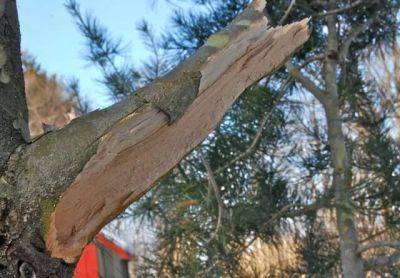
Snowstorm aftermath: pruning, prayers, goodbyes
As I told reader Lynn the other day, when she commented about her own snow-damaged landscape, I start working while it’s snowing. During the storm at several junctures, I gently knock heavy loads off some vulnerable evergreens, especially, to prevent buildup. I always use a broom where I can reach, and make my movements in upward strokes (not pulling downward, which further adds to the weight and can split the wood, especially in brittle pines, for instance).I never mess with ice-encrusted branches; too vulnerable. On taller specimens, I use a 10-foot piece of quarter-round molding (above) from the lumber store—my secret weapon, left over from a home improvement a decade ago. It’s about an inch thick, and the trick is it’s sturdy yet flexible, so I can weave it up into the higher branches and sort of wiggle it around slowly (in a small lasso motion) without inflicting damage
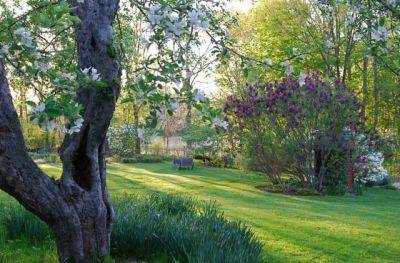
New lilac slideshow: call me old-fashioned!
THERE ARE MORE THAN 2,000 NAMED LILAC CULTIVARS, and I grow just a handful. But in early May, I feel as if I’m positively surrounded by them–one of the great joys of a Northern garden, where the climate suits these popular spring shrubs.
Popular Topics
Our site greengrove.cc offers you to spend great time reading Trees & shrubs latest Tips & Guides. Enjoy scrolling Trees & shrubs Tips & Guides to learn more. Stay tuned following daily updates of Trees & shrubs hacks and apply them in your real life. Be sure, you won’t regret entering the site once, because here you will find a lot of useful Trees & shrubs stuff that will help you a lot in your daily life! Check it out yourself!
